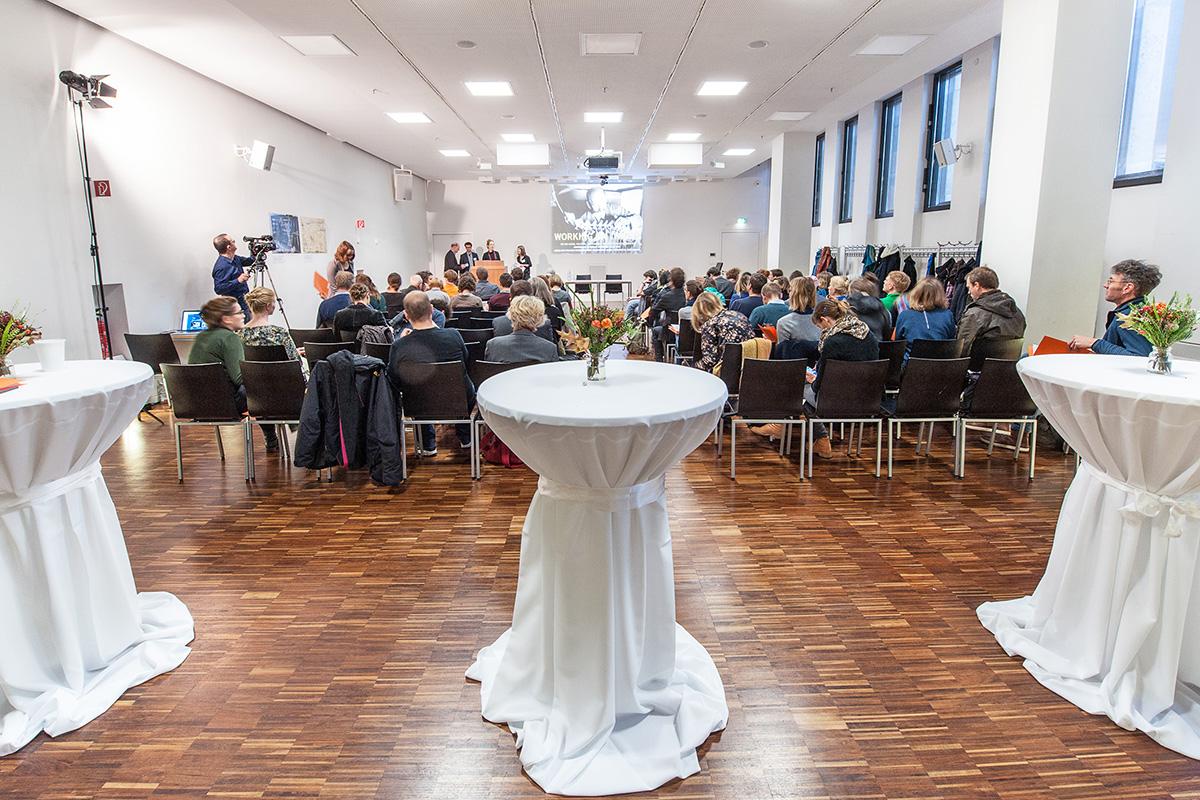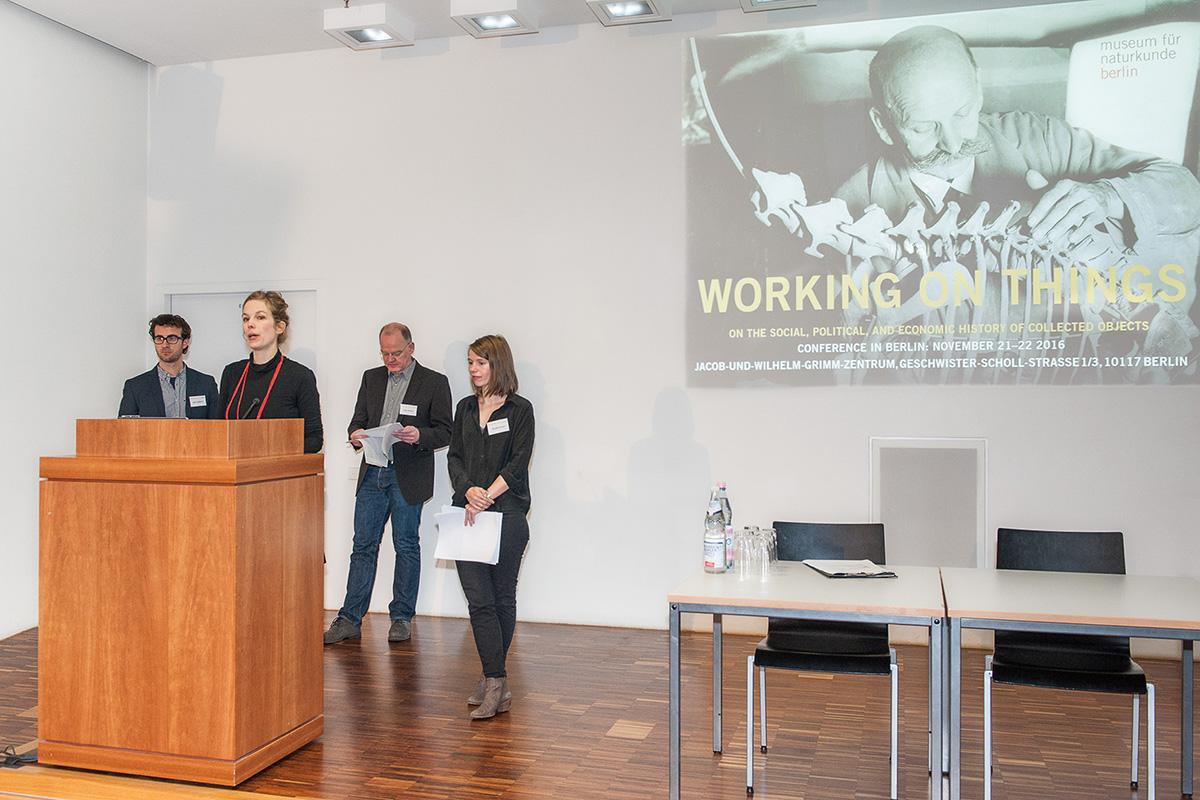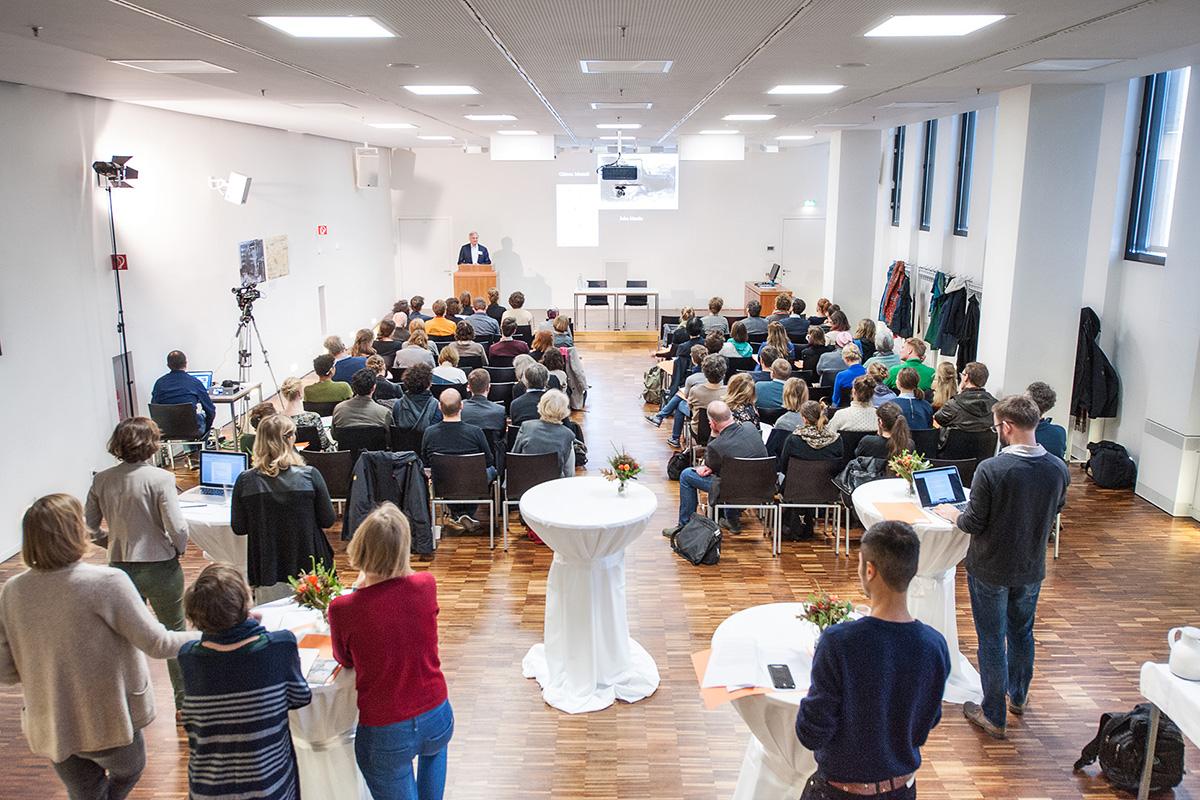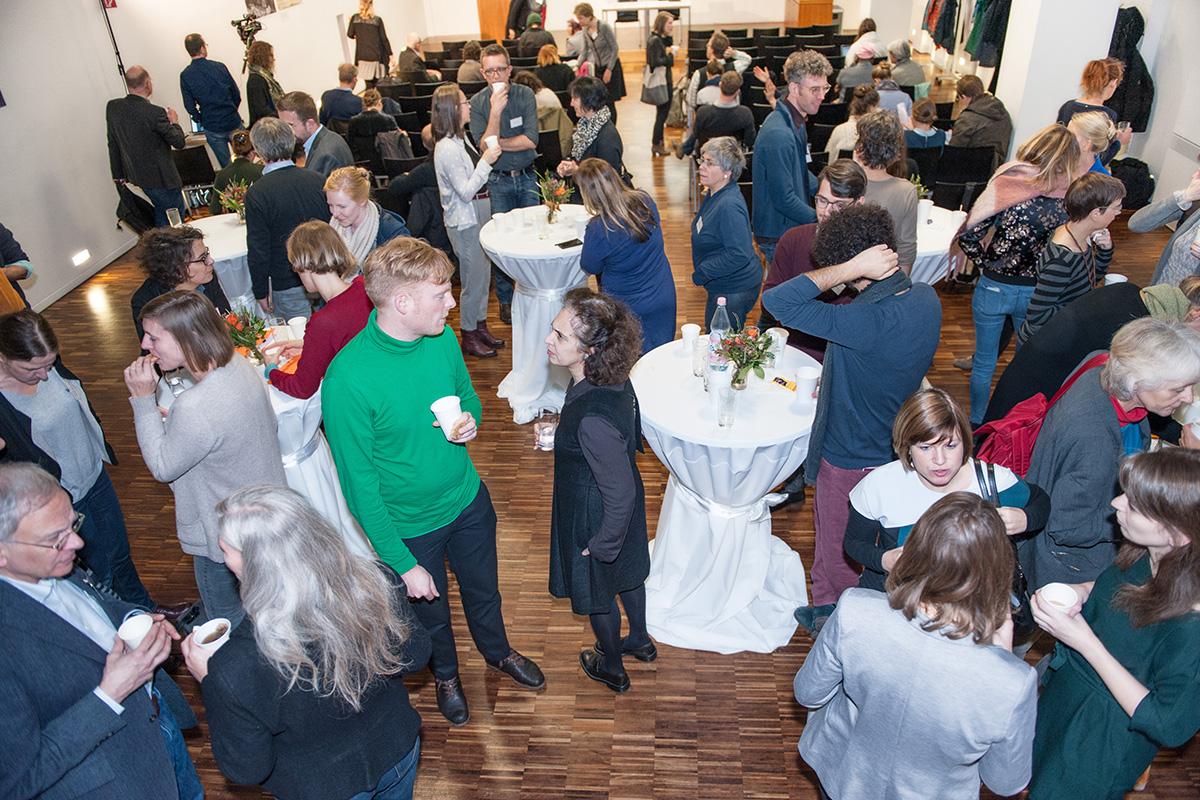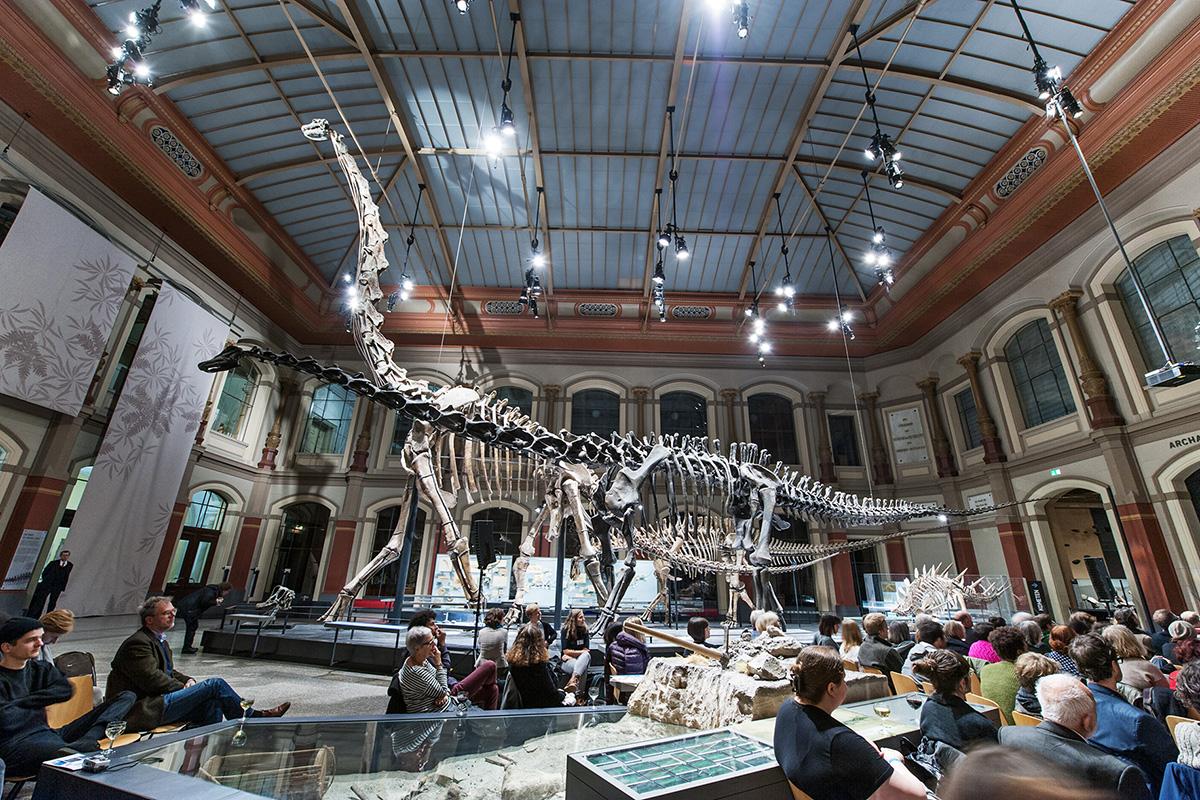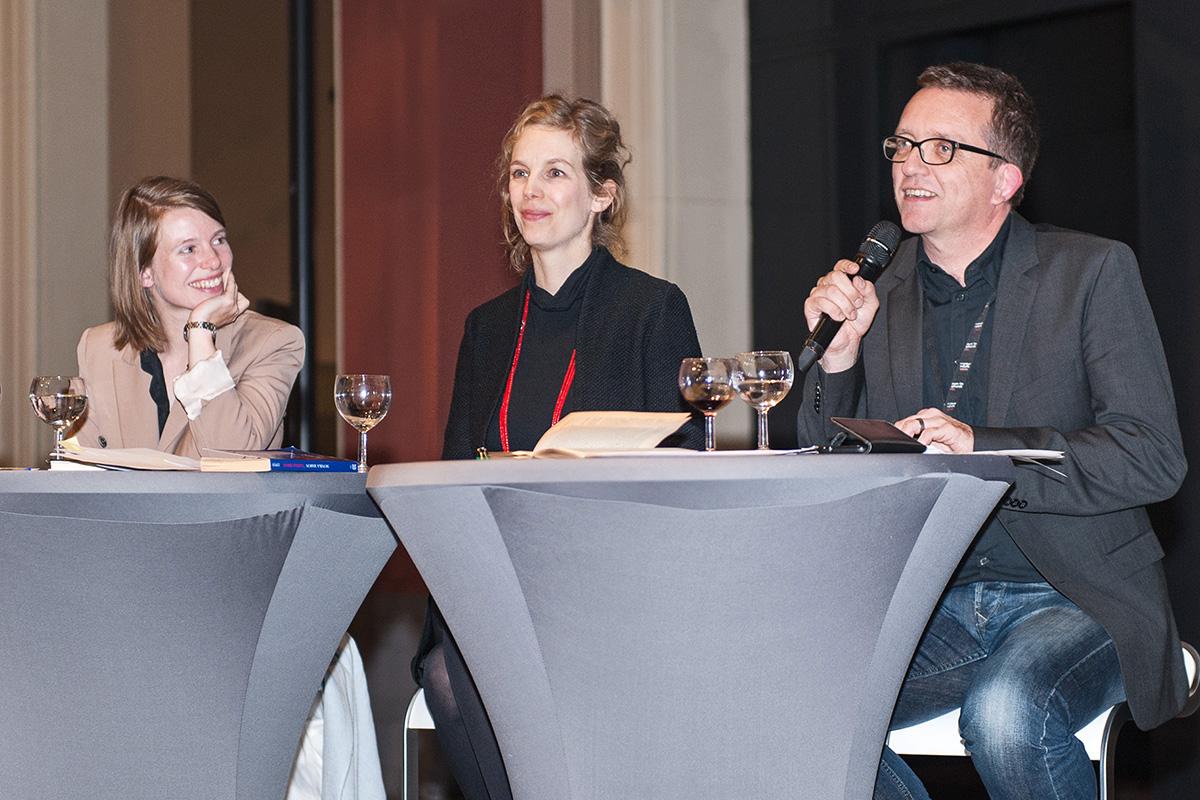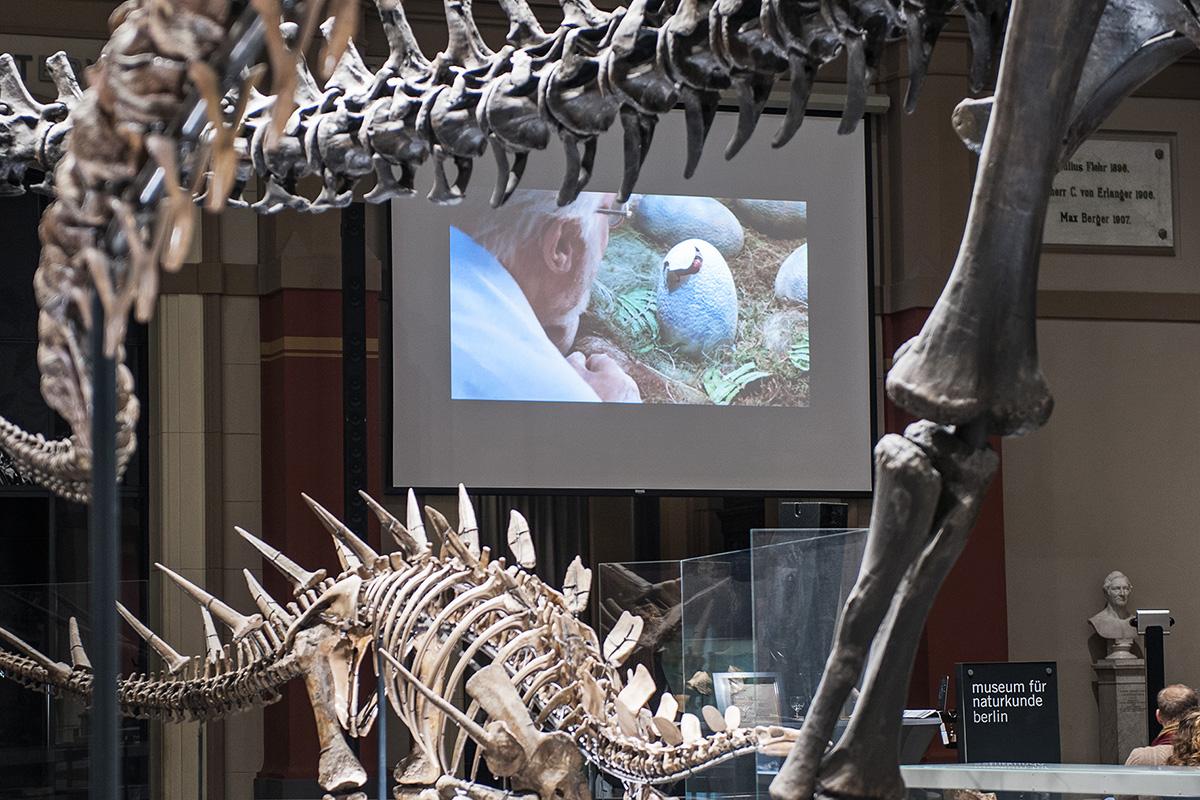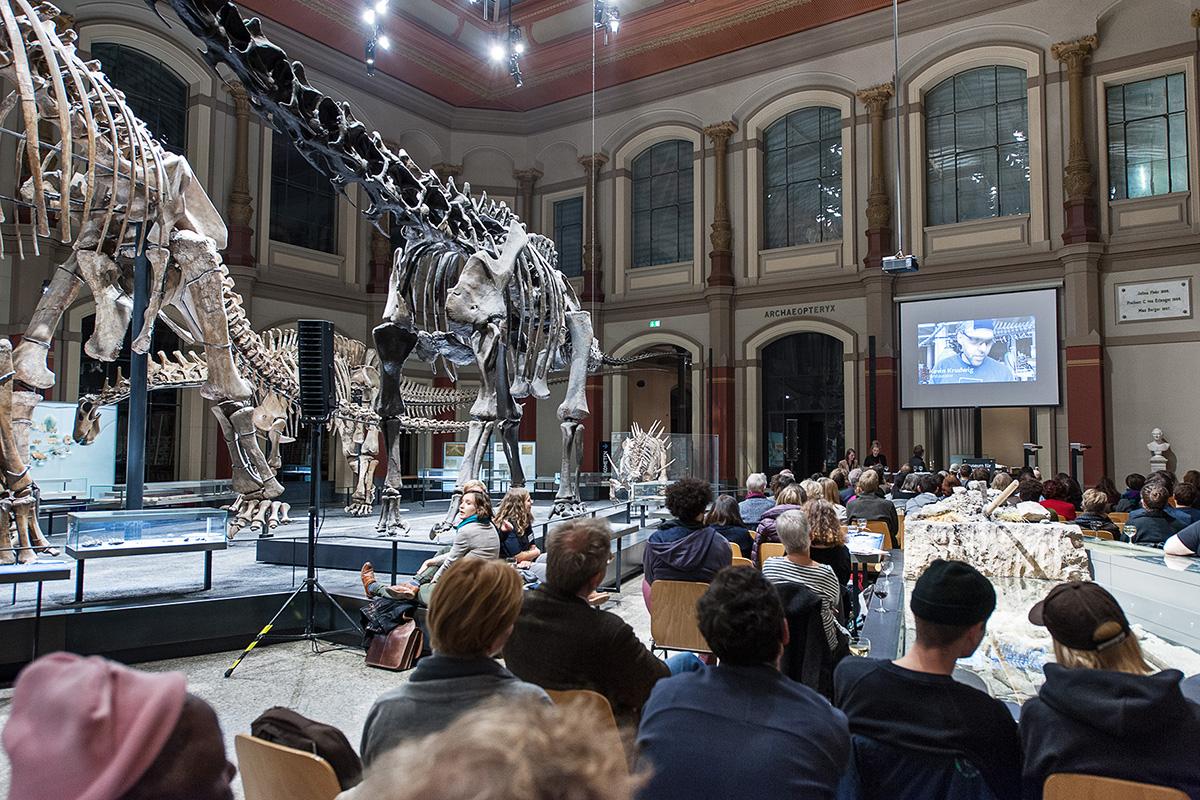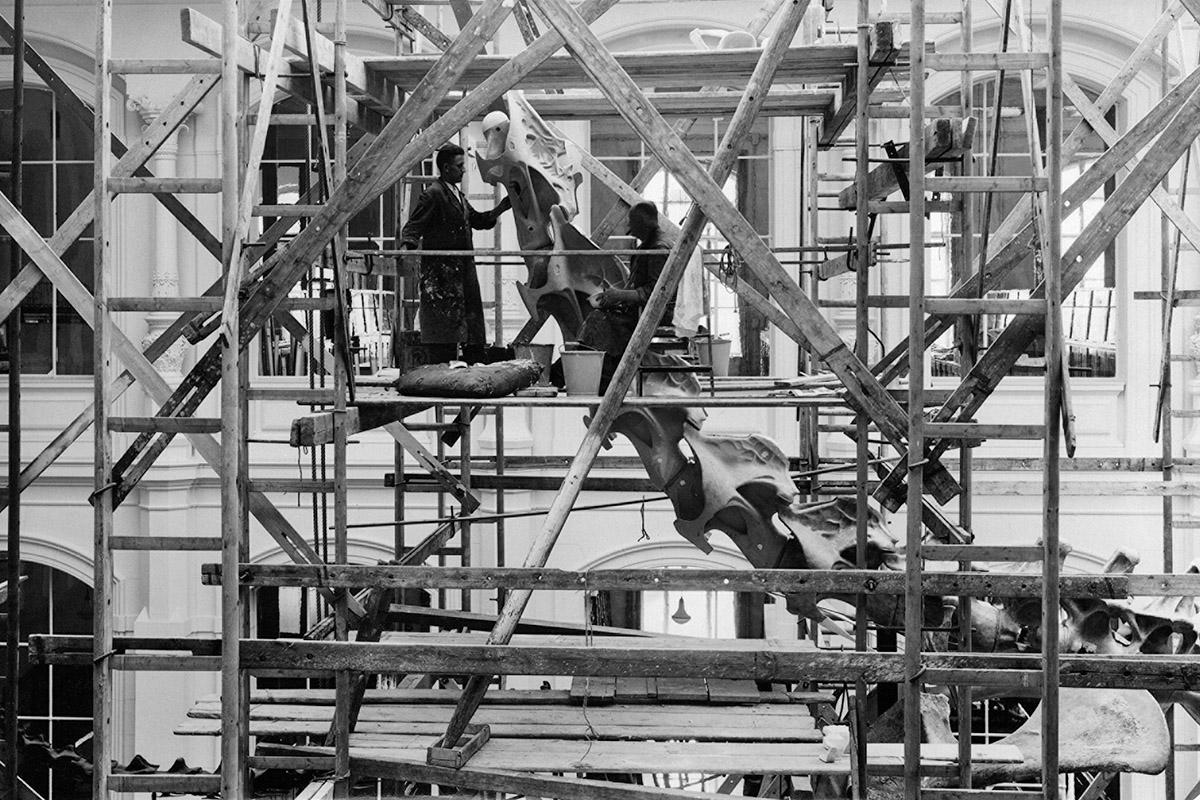Brachiosaurus brancai as an Icon of Politics, Science, and Popular Culture
For almost eighty years now, one of the world’s most prominent scientific objects has been towering over the Berlin museum scene: the skeleton of Brachiosaurus brancai, which has been on display in the Museum’s atrium since 1937, was excavated from 1909 onwards in colonial German East Africa – present-day Tanzania – by palaeontologists from the Berlin Museum für Naturkunde. The finds bear eloquent witness to the Jurassic period and remain one of the world’s most important palaeontological specimens. As museum objects, they also attest to the chequered history of the twentieth century. Discovered during the colonial era of the German Empire, they were prepared and subjected to its earliest scientific analysis under the Weimar Republic, presented to the public during the Nazi era, placed into storage in the Museum’s basement in 1943 for safekeeping, returned to public view in 1953 in the then-divided city, and finally re-analyzed and reassembled in 2007 on the basis of the latest scientific findings and reconstruction techniques. Thus Brachiosaurus brancai is an object of global significance that spans geological eras, political entities, nations, cultures, and academic disciplines.
The project focuses on the role of Brachiosaurus brancai as an icon of politics, science, and popular culture in the hundred years from its excavation to the present day. Three closely linked sub-projects are devoted to studying the political, scientific, and museum history as well as the function and presentation of those world-famous palaeontological finds.
The research results have been published under the title "Dinosaurierfragmente. Zur Geschichte der Tendaguru-Expedition und ihrer Objekte, 1906-2018" (in German) by Wallstein Verlag in December 2018.
Research Areas
1. Excavation and Its Post-History: Berlin’s Brachiosaurus as a Political Object - Dr. Holger Stoecker
This sub-project, which is based at the Institute of Asian and African Studies at Humboldt-Universität, examines the excavation and its subsequent history from the perspectives of African studies and the history of science. Its primary focus is on the dinosaur’s meaning as a political object in the context of colonial history in the period from 1900 to the 1930s. Click here for more information.
2. Berlin’s Brachiosaurus as an Object of Knowledge - Dr. Marco Tamborini
Based at the Museum für Naturkunde, this sub-project studies Brachiosaurus brancai as an object of knowledge. It examines the significance of the finds for the development of paleontology, studies the strategies of authentication that were used, analyzes forms of inscription, explores the history of paleontological reconstructions and revisions, and investigates the macroevolutionary debate of the first half of the 20th century.Based at the Museum für Naturkunde, this sub-project studies Brachiosaurus brancai as an object of knowledge. It examines the significance of the finds for the development of palaeontology, studies the strategies of authentication that were used, analyzes forms of inscription, and explores the history of palaeontological reconstructions and revisions. Click here for more information.
3. Berlin’s Brachiosaurus as a Museum Exhibit and Object of Popular Culture - Dr. Mareike Vennen
This sub-project is located at the Institut für Kunstwissenschaften und Historische Urbanistik of the Technische Universität Berlin. It focuses on the Tanzanian finds as museum exhibits and objects of popular culture and explores international presentation practices for displaying dinosaur fossils. The time periods studied by this sub-project are the most important phases of the visualization and public imagination of this fossil: the excavation years, the first museum display, and the subsequent reconstructions. Click here for more information.
Past Events
December 6 2018
Book launch "Dinosaurierfragmente"
September 6-7 2018
International Workshop "Politics of Natural History. How to Decolonize the Natural History Museum?"
flyer_politics_of_natural_history_web2.pdf
18 July 2017
Evening Talk: James Delbourgo about "Collecting the World. Hans Sloane and the Origins of the British Museum". Further information: flyer-collectingtheworld.pdf
21st-22nd November 2016
International conference: "Working on Things: On the Social, Political, and Economic History of Collected Objects"
Keynote lecture and other talks of the conference are available at https://lisa.gerda-henkel-stiftung.de/.
Programme: flyer_working_on_things.pdf
Abstracts: abstracts_cvs_working_on_things.pdf
Conference proceedings (in German)
See photos below.
21st November 2016
Film and reading at the dinosaur hall of the Museum für Naturkunde as part of the series "Filmwelten der Wissenschaft": "Knochenarbeit. Oder: Dinosauria museologica"
10th-11th March 2016
Workshop: "Dinosaurier in Berlin. Museums-, wissenschafts- und afrikawissenschaftliche Perspektiven auf die Geschichte des Berliner Brachiosaurus brancai, 1906-2015"
Programme (in German): dinosaurier_in_berlin_maerz-workshop.pdf
The Debate about Brachiosaurus brancai
Brachiosaurus brancai has been the most prominent find in the excavations from Tendaguru over a hundred years ago and a major focus of political and public interest ever since. Recently, media interest mainly focused on the political context of the acquisition of the dinosaur fossils.
Provenance research is an essential part of the joint project Dinosaurier in Berlin. Brachiosaurus brancai - eine politische, wissenschaftliche und populäre Ikone (Dinosaurs in Berlin. Brachiosaurus brancai as an icon of politics, science and popular culture). The circumstances around the acquisition of the fossils are investigated by Dr. Holger Stoecker within the sub-project at the Seminar for African Studies at Humboldt-Universität.
Press echo (mostly in German):
- Hubert Filser: Gebt sie wieder her, SZ 19.6.2019.
- Gretchen Vogel: Countries demand their fossils back, forcing natural history museums to confront their past, Science 27.5.2019.
- Volkart Wildermuth: Buchkritik: „Dinosaurierfragmente“. Wie aus einem Stück Stein spannende Naturgeschichte wird, DLF-Kultur 6.2.2019.
- Ronald Düker: Dino soll nach Hause (/Die Zukunft des Dinos), ZEIT 31.1.2019.
- Peitz Christiane: Streit um Dinosaurier im Naturkundemuseum. Ein Hinweis auf die Kolonialgeschichte wäre geboten, Tagesspiegel 31.1.2019.
- Thorsten Jantschek: Muss das Museum sich von Dinos trennen?, DLF-Kultur - Tacheles 19.1.2019.
- Kathrin Schwiering: Dino-Erbe: Der Brachiosaurus im Naturkundemuseum, RBB Kultur - Das Magazin 19.1.2019.
- Griet von Petersdorff: Tagesthemen (Min. 24:10) 14.1.2019.
- Dinosaurierfragmente. Die Geschichte des Brachiosaurus brancai, DLF-Kultur Fazit 10.12.2018.
- Wie der Brachiosaurus ins Berliner Naturkundemuseum kam. Ein Gespräch mit Ina Heumann, RBB 6.12.2018.
- Andreas Kilb: Namen, die keiner mehr nennt, FAZ 12.9.2018.
- Christoph Schmälzle: Provenienzforschung : Ist das Kunst, oder muss das wieder weg?, FAZ 16.8.2018.
- Rebekka Habermas: Kolonialismusdebatte. Picassos Masken, Süddeutsche 10.7.2018.
- Christiane Habermalz: Deutschlands koloniale Vergangenheit. Zaghafte Aufarbeitung nach langer Amnesie, Deutschlandfunk 5.6.2018.
- Philipp Oltermann: Germany moves slowly on returning museum exhibits to ex-colonies, theguardian.com 17.5.2018.
- Karl-Heinz Kohl: So schnell restituieren die Preußen nicht, FAZ 17.5.2018, S. 11.
- Michael Fischer: Tansania verzichtet auf Entschädigung, HAZ 5.5.2018.
- Anna-Lena Wenzel: Interview mit Mareike Vennen: Provenienzforschung im Museum für Naturkunde Berlin, kultur-mitte.de 24.4.2018.
- Deogratius Kamagi: Germany, Tanzania to Cooperate On Wildlife Species Research, Eabiz.com 12.3.2018.
- Mu Xuequan: Tanzania rules out bringing back dinosaur fossils preserved in Germany, Xinhua 23.2.2018.
- Bénédicte Savoy: Die Zukunft des Kulturbesitzes, FAZ 12.1.2018.
- Nikolaus Bernau: Mehr Geschichte wagen, Berliner Zeitung 29.12.2017.
- Patricia Pätzold: Vom Fossil zur Ikone, Tagesspiegel 18.12.2017.
- Richard Stoltz: Ein falscher Knochen, Junge Freiheit 16.11.2017.
- Sophie-Isabel Gunderlach: Besucherliebling im Naturkundemuseum. Dino mit kolonialer Vergangenheit, taz 23.10.2017.
- Thomas Kaestle: Berlins Dino vor Rückgabe?, HAZ 20.10.2017.
- Nada Weigelt: Wie der Riesen-Dino nach Berlin kam, dpa 19.10.2017.
- Holger Stoecker: Auf dem Hügel der Schreckensechsen, FAZ 18.10.2017.
- Andreas Kilb: Knochen für Berlin. Zwei Podien und ein Projekt zur Provenienzdebatte, FAZ 22.9.2017.
- Birgit Rieger: Provenienzforschung. Was tun mit Kriegstrophäen?, Tagesspiegel 21.9.2017.
- Tilman Baumgärtel: Ausstellung „Not A Single Bone“ in Berlin. Der Knochenklau, TAZ 11.9.2017.
- Nadine Emmerich: Brachiosaurus-Hack. Künstlerduo kritisiert mit "Not a Single Bone" koloniale Perspektive des Naturkundemuseums, epd.
- Dagmar Dehmer: Herkunftsforschung in Berliner Museen. Nachdenken über Tendaguru, Tagesspiegel 6.9.2017.
- Thomas Gith: Schatzkammer der Arten. Hinter den Kulissen des Berliner Naturkundemuseums, Kulturradio 7.8.2017.
- Florence Mugarula: Tanzania: State Won't Bring Back Dinosaur Fossils, allAfrica 29.6.2017.
- Valentine Oforo: Return of dinosaurs’ remains from Germany not profitable, govt says, The Citizen 28.6.2017.
- Ricardo Tarli: Streit in Berlin. Naturkundemuseum soll Saurierknochen an Tansania zurückgeben, Tagesspiegel 26.7.2016.
- Hauke Friederichs: Der Schatz aus dem „deutsche Boden Afrikas“, PM History 1.7.2016, S. 64-73.
- Julian Daum: Warum der weltberühmte Brachiosaurus im Naturkundemuseum in Berlin zu sehen ist, Berliner Zeitung 10.3.2016.
Cooperation Partners
The research project is carried out in cooperation with the Institute of Asian and African Studies and the Cluster of Excellence Image Knowledge Gestaltung of Humboldt-Universität zu Berlin, and the Institut für Kunstwissenschaften und Historische Urbanistik at Technische Universität Berlin.
Funding
Funded by the Federal Ministry of Education and Research.
